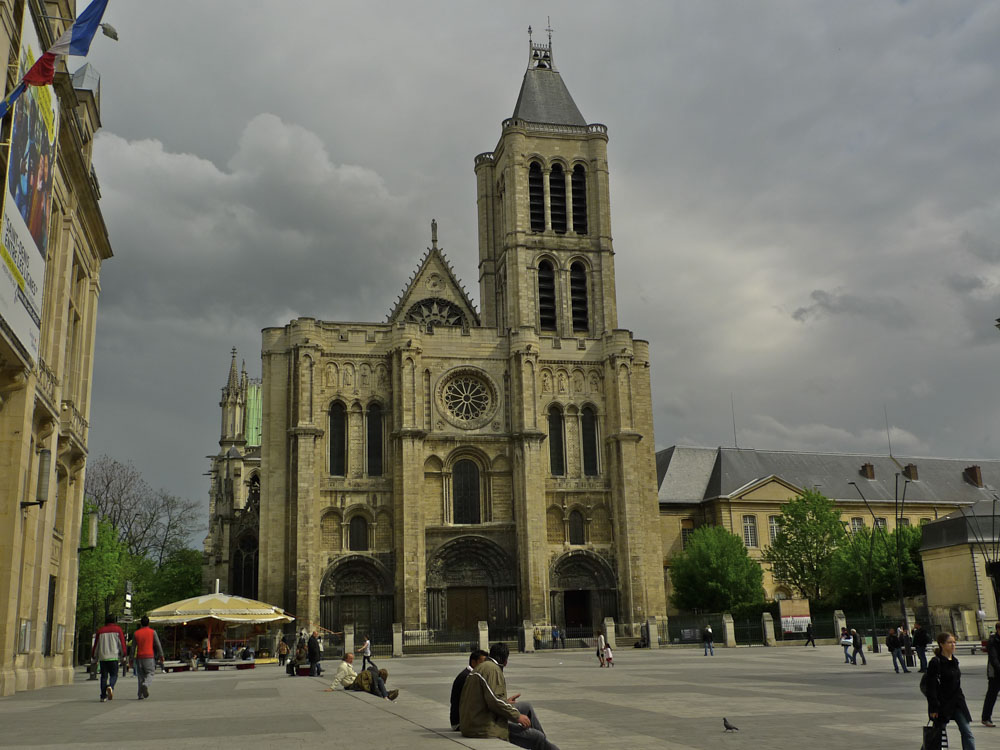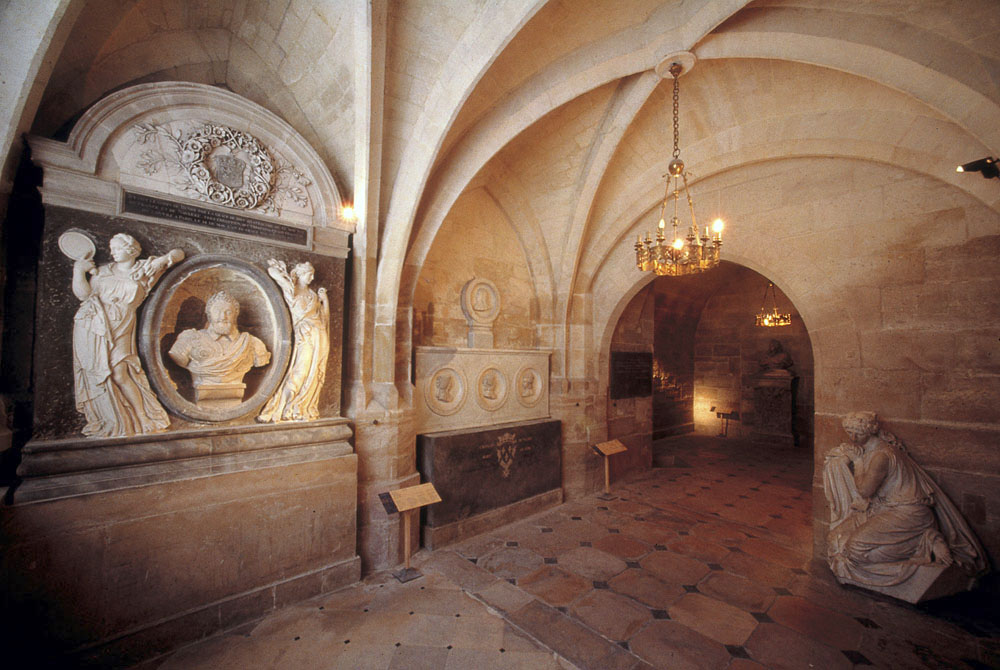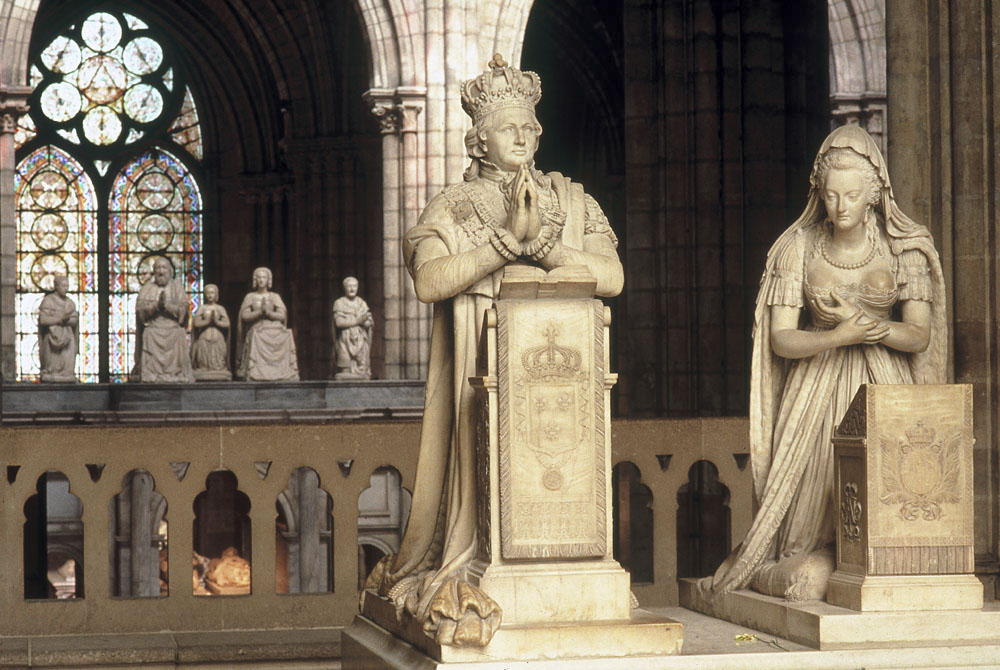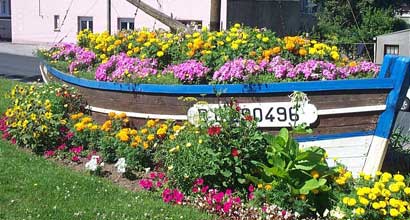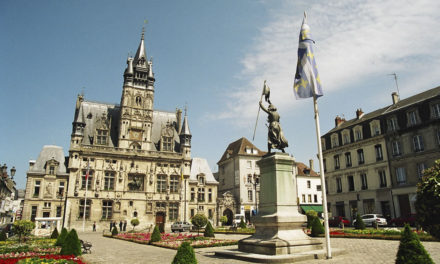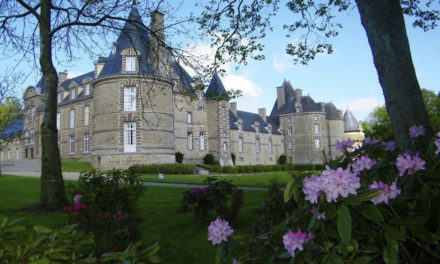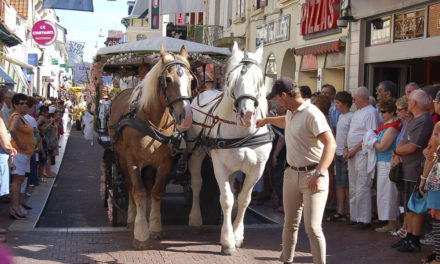Saint Denis, one of the earliest Christian martyrs, was beheaded in the hamlet of Catulliacus and it was Saint Geneviève who built the basilica in his honour in 475. The Basilica or ‘La Basilique’ is practically a history lesson in funeral sculptures for it is in this necropolis that practically all the Kings and Queens of France are buried, save three, since the Capetians. There are over seventy recumbent statues and tombs. Amongst them, pictured to the right, are Carloman, King of Bourgogne, brother of Charlemagne, and son of Pepin Le Bref who was crowned King in 754 by Pope Etienne II with his two sons, Charlemagne and Carloman. Carloman’s corpse was discovered buried in Reims around 1263. He died in 771 aged twenty. Next to him lies Ermentrude, Queen of “France occidentale’ and wife of Charles II. She died in 869 aged 44. Her body was also moved to the Cathedral around 1263. The coronation regalia was also stored here until it was needed in Reims, together with the “Oriflamme’ or royal banner, which the King raised to mark every war and which lived in the Abbey when the country was at peace.
Book a Hotels near Saint Denis Basilica
History
As recently as June 2004, the heart of the dauphin, Louis XVII, son of King Louis XVI and Marie-Antoinette, finally joined his forbears in the royal crypt, ending a 200 year old mystery of his fate after the Revolution. The ceremony took place exactly 209 years after his death from tuberculosis in the Temple prison. The doctor who took part in the autopsy smuggled out the heart and finally, as a result of a DNA test all these years later, it was recognised as being that of the Dauphin. The Cathedral has many magnificent Renaissance mausoleums, amongst them that of Louis XII and Anne de Bretagne pictured here. The Tomb was commissioned by Francis I and was the work of Florentine sculptors living in France. Within, the King and Queen appear dead, whilst above, the couple praying are said to symbolise their resurrection. Celebrating the fall of the monarchy in the revolution, on its first anniversary, a mob invaded the consecrated crypts of the Cathedral and threw the bones into a common grave. Nowadays, the bones of the royal family are in a shared grave in the crypt with all their names on a plaque, as it was not possible to identify the remains after this act of early vandalism.
Viollet-le-Duc
The Basilica was the first Gothic masterpiece of the 12th century. Abbot Suger was responsible for its rise to prominence and it was completed in the 13th Century. At one stage after the profanity of the revolution, when even the lead roofing was eventually removed in 1794, the Cathedral was open to the elements and largely abandoned for a period. It was even suggested that it should be used as a grain store. Subsequently Viollet-le-Duc restored it in the 19th century – work which was begun under Napoleon I. Not all of the original stained glass windows remain, but the cathedral was known as ‘Lucerna’, meaning lantern, because of the brilliance of the light streaming through its windows. The Rose window pictured here is in the south arm of the transept and features God the Father, Angels, signs of the Zodiac and work for the different months of the year. Every year the cathedral resounds to the rich sounds of the famous works of classical composers during the music festival at Saint-Denis from early June to early July.
Legion d'Honneur School and Museums
To the South of the Cathedral, the majestic abbey building houses the Légion d’Honneur National School, founded at the beginning of the 18th century and subsequently used as a boarding school for the daughters of holders of the Légion d’Honneur. A little further afield you can visit the Art and History Museum which is housed in the former Carmelite Convent in Légion d’Honneur Street. Louise de France, the daughter of Louis XV, was a patron in 1771. Nearby in Rue Ambroise-Croizat the fascinating Musée de L’orfèvrerie Bouilhet-Christofle, is home to a rich collection of over 2000 pieces of silver embracing various eras from 1830, through Art Nouveau to the present day created by the jeweller whose factory was located near the canal since 1874. Here too in Saint Denis, you will find the biggest market in the Ile de France with its Maison de Arbalétriers soaring above the colourful scene. The Tourist Office or ‘Office de Tourisme’ is open 7 days a week all the year round and is at 1, Rue de la République. Tel: 01 55 870 870.
Copyright text : Sarah Francis.

